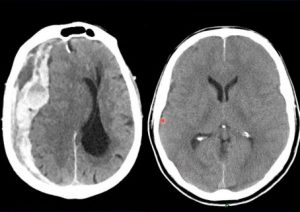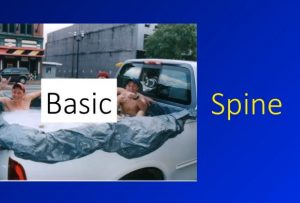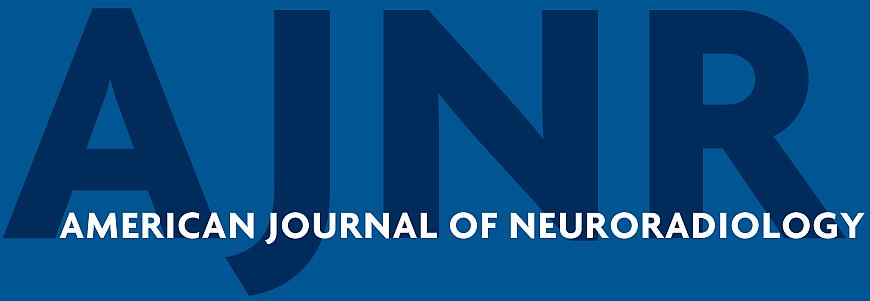Resident education guide
Residents begin radiology training in their second postgraduate year (PGY2) and continue through PGY5. There is a wide range in knowledge, as there is a steep learning curve during this time. Beginning residents may be closer in education to medical students and need to emphasize some basic topics, like imaging of hemorrhage and general approaches to studies. As residents mature, near the end of their training they perform more independently, like fellows.
Search Patterns
Part of success in radiology is learning how to successfully look through a study for abnormalities, something radiologists refer to as a search pattern. This is similar to how medical students learn to do an H&P in the same order each time. It is the most basic step in training and one that radiologists repeatedly fall back on during their career.
Each study in radiology, whether a CT or an MRI, usually has one or more sets of images (“series” or “sequences”). These are ways in which the imaging data is displayed to help identify certain aspects of the image or pathology better. You need to develop a system for looking at each of these, and knowing what to look for in each one.
Specific search patterns
Each of the linked videos in the side panel will give you some information about a search pattern for that study type.
The full playlist of search pattern videos is found here.
Links to commonly used search patterns:
- CT head
- CT face
- CT cervical spine
- CTA head and neck
- CT temporal bone
- MRI brain
- MRI brain – seizure
- MRA head
- MRA neck
- MRI cervical spine
Common Conditions
Radiology is a big field, but a few topics are more relevant when you are starting because they are more common and often more important not to miss. Check out the videos below to learn more about those areas.
Hemorrhage
One of the first things you need to know about is the appearance of intracranial hemorrhage, a life-threatening condition evaluated by a neuroradiologist almost every day. Intracranial hemorrhage includes extraaxial hemorrhages (subdural hematoma and epidural hematoma), subarachnoid hemorrhage, and parenchymal hemorrhages. Check out this lecture to learn more about the appearance of hemorrhage and how it evolves over time.
Spine
Spine is a tough area for most medical students because the anatomy is somewhat tough and it can be difficult to see what the radiologist is seeing when looking at the disc, spinal canal, and neural foramina. Moreover, there is a lot of subjectivity when evaluating these regions.
To learn more, check out the dedicated lecture about spine imaging.
Advanced Topics
As residents become more advanced and familiar with common conditions, like hemorrhage, spine degenerative disease, and vascular imaging, they can begin to focus on high end knowledge about more specific conditions. For example, a resident should be able to identify a mass in the brain and give a reasonable differential of possible diagnoses. They may not know more sophisticated information about treatment and prognosis, but that is not the emphasis at this point
As residents advance, they should also start to understand more about how images are obtained and how protocols can be tweaked to provide better images for a given condition.
More senior residents should also be familiar with the range of neuroradiology procedures performed and start to get some experience doing them.
Brain Tumors
Brain tumors are another common condition encountered in neuroradiology. The most common brain tumors include metastases, primary parenchymal tumors (like gliomas), and meningiomas. Other neoplasms like lymphoma can also affect the brain. It’s good for anyone spending time in radiology to have a good overview of what different brain tumors look like. As mentioned above, a fellow should know more about different types of tumor, their management, and how different factors like genetic markers contribute to the diagnosis and prognosis.
There is a dedicated lecture about these brain tumors:
To learn more, check out the page specifically devoted to the topic of brain tumors:
Procedures
Procedures are a key part of neuroradiology. The most commonly performed procedures include: lumbar punctures, myelograms, cisternograms, biopsies, and blood patches. Fellows should be experts in common procedures, namely lumbar punctures and myelograms, and be capable of teaching them to other trainees such as medical students. They should know about the contraindications, including risks of bleeding, and be able to adapt in a complex patient. have a rudimentary knowledge of these procedures, including indications for performing them, how they are performed, and common risks and contraindications.
There is a dedicated lecture about neuroradiology procedures
Explore more about the topic here

Reading materials
By the time a trainee reaches fellowship, they should generally be moving beyond using textbooks. Textbooks can cover a topic in some depth, but cannot be adapted with the speed required to keep up with the most up-to-date techniques. For this reason, fellows should focus on papers in the literature about a given topic. A good way to approach this is to find review papers about a topic of interest in key journals. When in depth analysis is required, the most recent research papers on a topic can then be read. That said, there are a few books which are useful either as reference materials or as advanced reading, described more below. Books have a more limited role. For a more complete list of books I recommend, see the full list here.
Books
Books are still a key resource for residents. There are some great books that can help build your knowledge as you are starting, and more detailed books can serve as references as you continue to improve. More detailed books are probably not necessary except for residents likely to go on to pursue neuroradiology fellowship.
Neuroradiology Companion – Carlos Zamora, Mauricio Castillo
This is one of the first books on neuroradiology that I ever read (although it was an earlier edition). At the beginning, it has a nice section overviewing some general techniques in neuroradiology, such as how the scans are performed and what type of imaging you might perform for a given condition. Then, it goes into a case-based review of some of the most common conditions divided by body system. It shows you some key images along with short but relevant bullet points. This is a nice and somewhat short book which could be read over the course of a 2-4 week neuroradiology rotation. Great for junior residents on their first rotation.
Neuroradiology Requisites – Rohini Nadgir, David Yousem
This book is targeted to residents. It’s goal is to be thorough and cover most of the major neuroradiology topics, including brain, spine, and head/neck. There is a lot of detail there, and it’s longer than you could probably finish on a single rotation of 2-4 weeks. However, I think you could hit some key sections and review a lot of the figures. Then, on your subsequent rotations, come back and hit some of the key points.
Osborn’s Brain – Anne Osborn, Gary Hedlund, Karen Salzman
This is a high-level book which provides a lot of detail about imaging of the brain in almost all of its areas. This book is extremely readable, thorough, and considered the standard for imaging of the brain. For a resident, it’s almost too much, but a senior resident may benefit from it. It would be a good book for a senior resident who is planning on doing a neuroradiology fellowship or spending more time in neuroradiology.
Essentials of Osborn’s Brain – Anne Osborn
Target audience: senior residents, fellows, faculty
Detail level: medium
This is a revised version of Osborn’s high-level book which is more abbreviated for the junior trainee. This probably makes it more appropriate for the student or resident level with a little bit less detail. Given the lower price and the fact that most residents won’t need all that detail, it’s probably a good starting place for most residents and even some fellows. If you want more detail, then you can go for the full book.
Case review books
Case review books are a great supplement to your normal reading. In fact, I recommend that you spend a lot of time on these books during your rotations. A more thorough discussion of these books is available on the Core exam guide and the Full Book List. A brief list of the books you may be most interested in is here:
Board review books
For general board review, people generally love Crack the Core Exam by Prometheus Lionheart. It comes as a Volume 1 and Volume 2, and has been updated for 2024. There is also a Crack the Core Case Review and a dedicated Core Physics review called Radiology Physics – War Machine. Plus, it’s great that these are updated every year.
*disclaimer: links on this page are Amazon affiliate links. I get a small referral fee which helps fund this site if you purchase through these links
Journals
As you proceed as a resident, you should become less reliant on books and more reliant on the primary literature. I recommend that you check these journals out routinely and look to them for reference articles.
American Journal of Neuroradiology, or AJNR, is the flagship publication of the American Society of Neuroradiology (ASNR). It often has the most up-to-date neuroradiology research articles and occasional reviews which are worth checking out.
Radiographics is a great source of review articles. It is the educational publication of RSNA, and has a lot of great review content. It’s been publishing great review articles for years, so chances are there is a great review about the topic you are interested in.
Like Radiographics, Neurographics is the educational publication ofASNR. It has similar high quality reviews but covers only neuroradiology. You’ll find a lot of great review articles here.
Exam prep
Test-taking is a major and painful part of resident training. The main exam of relevance to residents is the ABR core exam, which takes place at the end of year 3 of residency (PGY-4).
ABR core exam
Residents should be thinking about the ABR core exam almost from the beginning of residency. If you consistently pay attention on your rotations, read books and articles as you proceed, and routinely go to and pay attention during lectures, you have completed half of the battle. The other half is to memorize the litany of things the ABR might expect you to understand. For more information, see the full link to the ABR cor exam page below:
All posts for residents
Of course, this is only the beginning. Check out the remainder of the site to see what other content is here. To see all posts tagged for residents, click here:
Thanks for stopping in!






